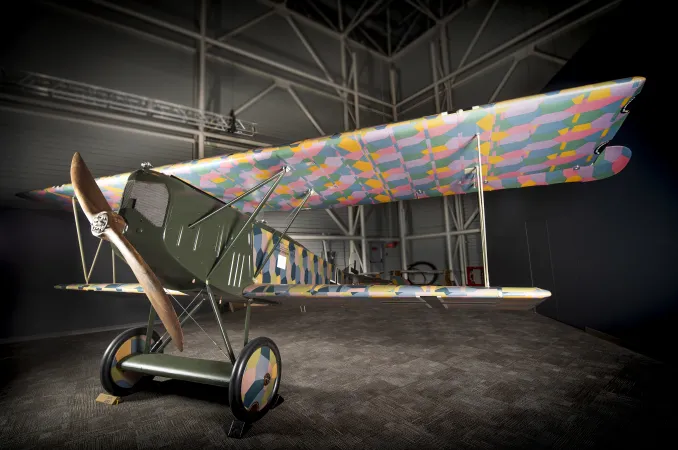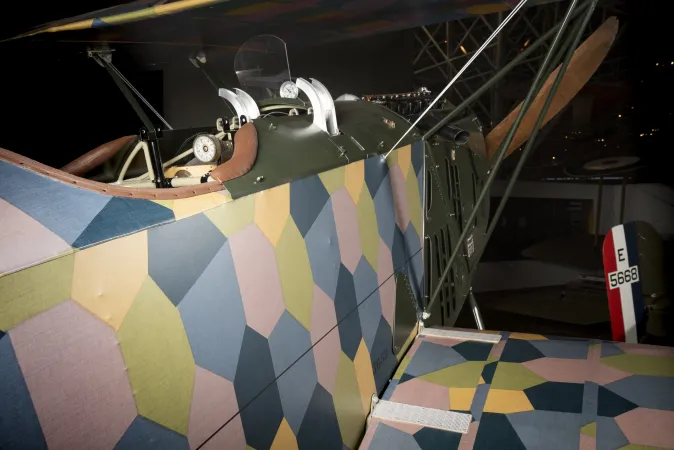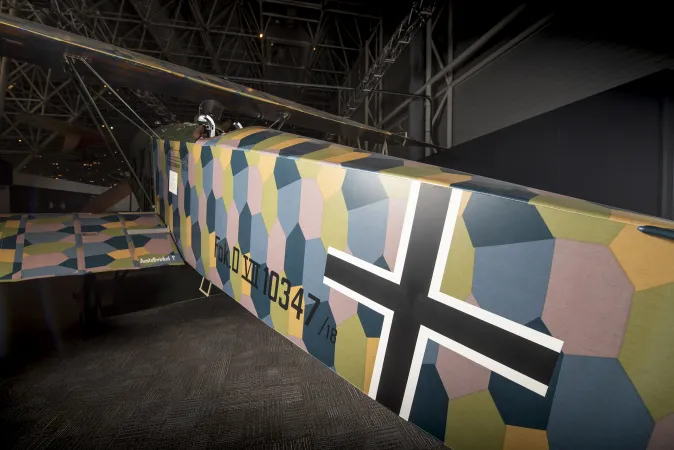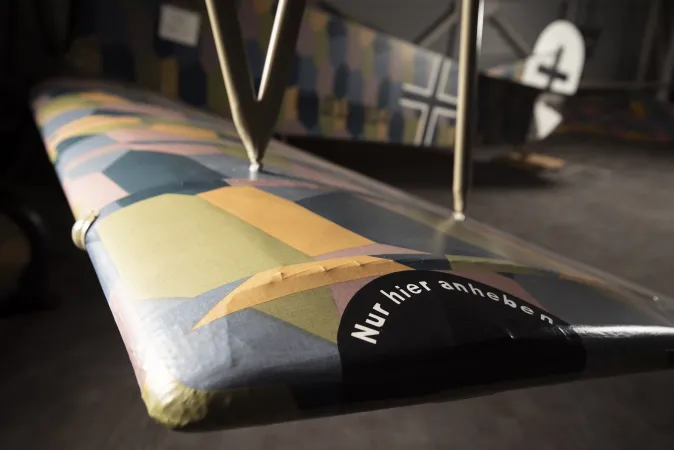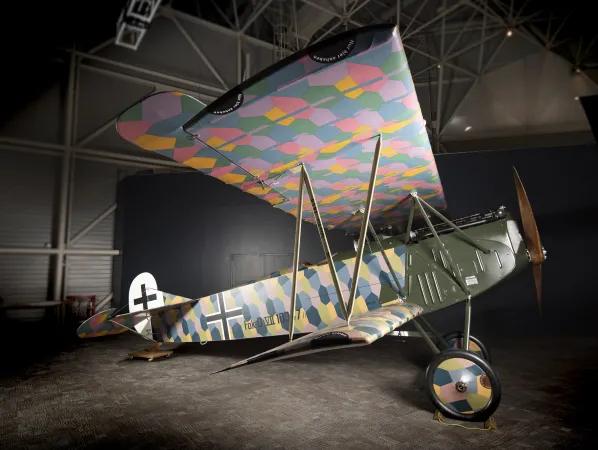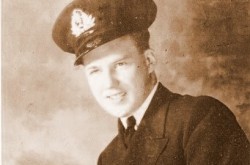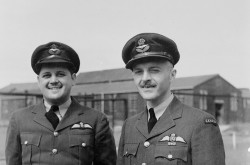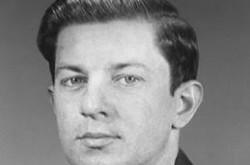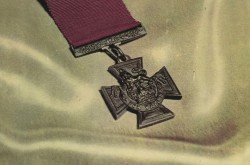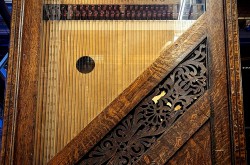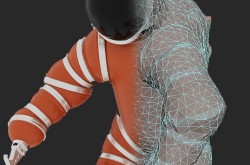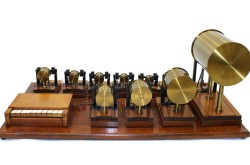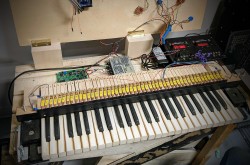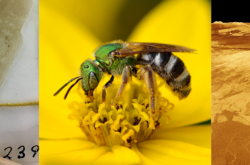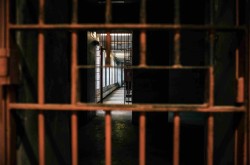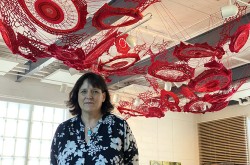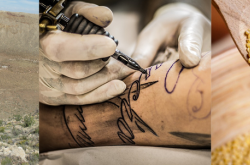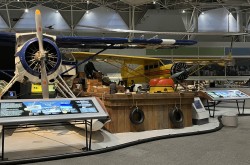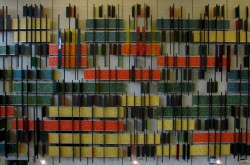Museum welcomes a “movie star” aircraft back into its collection
A distinctive and brightly-coloured aircraft with a movie-star past has found a home on the floor of the Canada Aviation and Space Museum.
Assistant curator Erin Gregory says this particular Fokker D.VII is special for more than one reason.
“We believe our specific Fokker went on to have a bit of a career in the movies. In the 1920s and 30s, there were several movies made about the exploits of aviators in the First World War, and we think that ours featured in a movie called Hell’s Angels.”
~ Erin Gregory, Assistant Curator
In addition to possibly being used as a movie prop, the museum’s Fokker is also one of the last remaining models produced from an original Fokker factory. Along with two other aircraft — a Junkers J.I and an A.E.G. G.IV — the Fokker will complete a trio of very rare German aircraft. The museum's A.E.G is the only one of its kind in the world and the Junkers J.I is the only complete version of that aircraft.
While the Fokker is in great shape now, that hasn’t always been the case; the plane has had a checkered past. In the early 70s, the museum acquired the aircraft and began restoration; but the project was put on hold.
“Part way through the restoration, the project was abandoned in favor of restoring the Curtiss HS-2L — the big flying boat on the museum floor — so that kind of took up everybody's time.” says Gregory.
According to Gregory, it’s not all bad that the project was abandoned in the 70s. At the time, some errors were made in the Fokker’s restoration and because the project was halted they were able to correct these errors later on. However, these errors were not corrected in Canada. This aircraft has been on a long and strange trip, from Germany to the U.S to Canada — and then briefly to New Zealand — before finally coming back to Canada to join the museum’s display.
Through a broad exchange of aircraft, engines, and services, the Fokker was sent to New Zealand for about two and a half years, where it was restored and then sent back to the museum in December 2018, explains Gregory.
On first glance, visitors will definitely notice the Fokker’s bright colours. The aircraft has what's known as “lozenge camouflage.” While it may look unusual, Gregory explains that this kind of camouflage was very common for German planes during the First World War.
“It’s actually not unique, it was pretty standard for the German air force at the time; it is unique to the German air force though,” says Gregory. “The lozenge fabric is an interesting choice. As a camouflage it does work apparently, which is very counterintuitive because it kind of says, ‘Hey, here I am.’”
Gregory explains that lozenge camouflage works in the same way that the dazzle camouflage worked. Essentially the idea behind the dazzle camouflage was to paint bold and colourful geometric shapes onto ships, so that the enemy wouldn't know what part of the ship they were hitting. The lozenge fabric works in the same way to confuse the enemy.
The colours may look painted on, but they’re actually printed on fabric and then pressed onto the aircraft.
“Things look weird in the air, and you can’t see much until they’re within 400 yards of you,” Gregory says.
This unique camouflage also helped with the weight and speed of the Fokker. By using the fabric, it avoided adding the unnecessary weight that several layers of paint would have added, Gregory explains.
She adds that another reason for this colourful camouflage comes from a difference in strategy. Allied planes were more likely to venture deep into enemy territory whereas the Germans wouldn't go as far, meaning they didn't need the drab camouflage that Allied planes typically used.
“The Germans don't have as detailed maps of the Allied positions as the British do for them. So it was probably more important for the Allies to have more drab-coloured aircraft,” says Gregory. “Because they didn't want to be noticeable when they made these incursions. When the Germans went over enemy lines, they were going over to do some damage and didn't care if you saw them or not.”
Visitors to the Canada Aviation and Space Museum can find the Fokker D.VII with ease; it’s now on display in the First World War section of the museum, located close to the front entrance.



